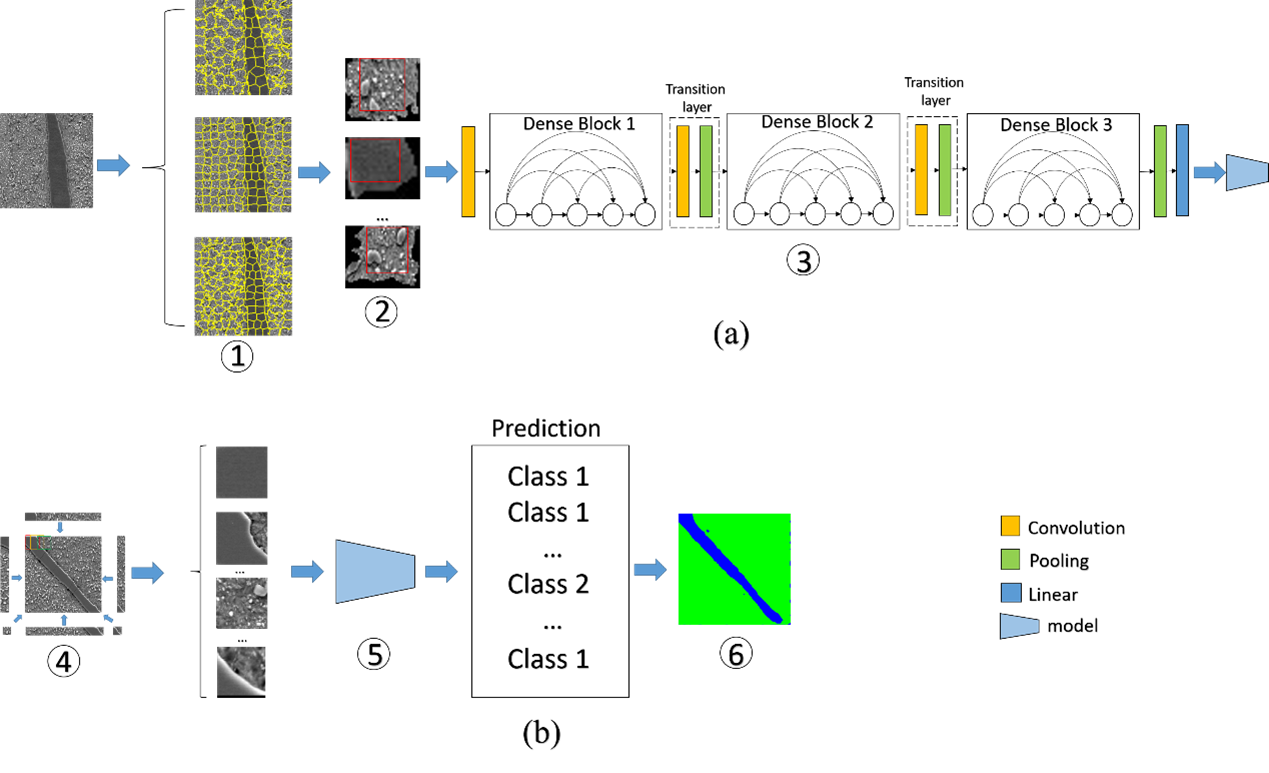Our team has recently achieved a significant breakthrough in the field of complex texture image recognition and segmentation by developing a method based on superpixel algorithms and deep learning.
Our team recently published a paper titled “Recognition and Segmentation of Complex Texture Images Based on Superpixel Algorithm and Deep Learning” in the international journal “Computational Materials Science” (IF: 3.3000). The School of Computer Engineering and Science at Shanghai University is listed as the primary affiliation, with Associate Professor Han Yuexing as the first author and Professor Chen Qiaochuan as the corresponding author within our research group. Furthermore, a significant contribution was made by Yang Shen, who played a crucial role in this research.

Material images often lack a sufficient number of training samples, which hinders the application of machine learning and deep learning techniques in material image analysis. In this study, we leverage an important characteristic of material images, namely the high similarity among pixels of the same phase, and propose a method for recognizing and segmenting the microstructure of material images based on superpixel algorithms and deep learning. The method consists of three steps: 1. Rectangular block extraction: Initially, we employ a classic superpixel algorithm, such as SLIC, to obtain different numbers of superpixels. Then, we extract the largest inscribed rectangular block within each superpixel. 2. Rectangular block recognition: We input these rectangular blocks into a convolutional neural network (CNN), with DenseNet chosen and enhanced as the backbone network for recognition. Additionally, considering the issues of non-uniform phase distribution and difficulty in distinguishing certain phases in material images, we select and improve the Focal loss to adapt to material images. 3. Pixel-level prediction and segmentation: Finally, we predict the class labels for each pixel in the entire image. After training, we slide a window of size l*l (l is an odd number) with a stride of 1 over the n*n-sized image, obtaining n*n rectangular blocks. The model predicts the class labels for these rectangular blocks, representing the class labels of the pixels in the middle of each block. By connecting pixels of the same class label, we achieve the recognition and segmentation of the microstructure in material images.
Essay:https://doi.org/10.1016/j.commatsci.2022.111398
Essay:https://www.sciencedirect.com/science/article/pii/S0927025622001690?dgcid=coauthor